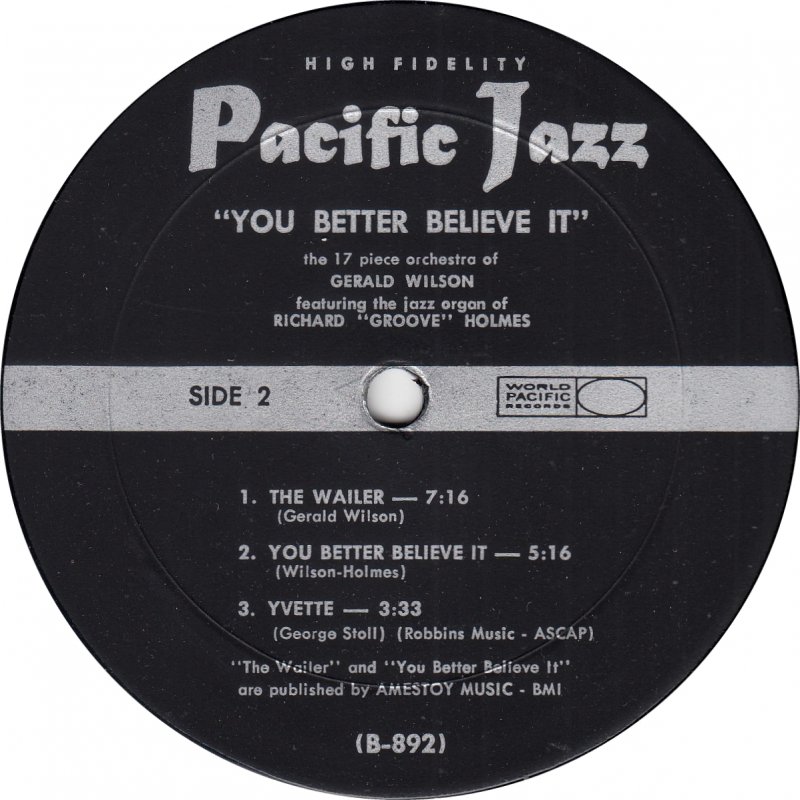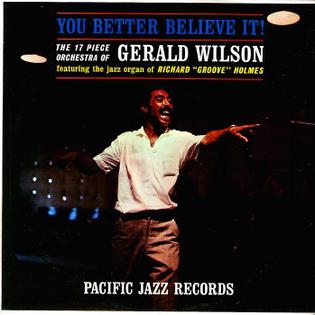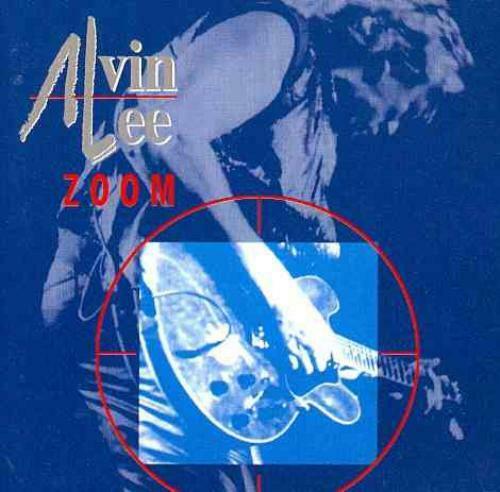
Long out of print, the sophisticated and timeless instrumental work titled You Better Believe It by underrated conductor/arranger Gerald Wilson is a first-rate masterpiece released on the Pacific Jazz label in 1961. The seven performances are available on CD in their original order on the 84-track, five-disc compilation, The Complete Pacific Jazz Recordings of Gerald Wilson & His Orchestra released on the Mosaic label, but the additional 77 tracks on the boxed set might distract from this impressive LP which stands as an important work of art on its own. Beginning with “Blues for Yna Yna,” the album starts off like an intriguing spy movie complete with understated dramatic tension. Written for Wilson‘s pet cat, according to liner note writer John William Hardy, the almost seven-minute excursion features the reeds of Harold Land. Explosive horns chirp over Richard “Groove” Holmes‘ jazz organ solos, but the 17-piece orchestra never gets in the way — just the opposite as Wilson adds this or that in clever fashion so that the pieces stay fresh over endless spins. “Jeri,” the second title and written for Wilson‘s daughter, is almost half the length of the opening track, but pulls away the curtain and explodes with the horns flowing and Holmes‘ keyboard ebbing, the rhythm section of drummer Mel Lewis and bassist Jimmy Bond directing the current so everything else can fall nicely into place. “Moody Blue,” with its pensive and majestic oozing prowl, was a major inspiration to “Sunny” author and Wilson aficionado Bobby Hebb who immersed himself in this album in the early ’60s and pointed out: “The great Gerald Wilson believed in the talent of Richard Holmes.” Indeed, Wilson gave Holmes a tremendous platform to infuse his ideas with those of the other gifted players, Joe Maini on alto, Walter Benton on tenor, and reed player Teddy Edwards, who helps open side two with his participation on “The Wailer.” “The Wailer” is almost like a “Part Two” to side one’s opening track, “Blues for Yna Yna,” back to the spy movie style — and Hardy‘s essay notes that it was written for a television play. One website claims Wilson appeared as a trumpeter in a 1959 CBS-TV drama, Lineup, for an episode called The Wailer. On the track with the same name as the TV episode the music creeps in and evolves into thickly textured swirls of brass, keyboards, and advancing drums. Richard “Groove” Holmes‘ organ swells up about six minutes into the seven-and-a-half minute expedition, just a marvelous performance that transcends jazz and borders on modern pop, a foundation for things that became mainstream within a decade of its release.
On the back cover of the original imprint, Hardy calls this disc “one of the most thoroughly ingratiating big-band jazz recordings in years,” and the test of time proves Hardy correct. The 17-piece orchestra performs like a trio or quartet, each musician knowing where to be and when to execute, so the tension shifts and the moods change as subtle instrumentation slides in track by instrumental track. Shifting from quiet to quickly dramatic, the ideas keep flowing from Wilson‘s creative fount and titles like “Straight Up & Down” continue the mission inside the under four minutes. It sure feels as if Blood, Sweat & Tears and Chicago were inspired by these sounds from 1961, and most certainly the Henry Mancini composed original soundtrack to The Pink Panther, recorded in 1963 and released in 1964, owes some debt to You Better Believe It. That this music is so film-ready should come as no surprise as Wilson was involved in the soundtrack to the motion picture Where the Boys Are in the ’60s and other TV and movie work. “Gerald Wilson‘s groove can only be told if you have the strength to pull the corner of your lips out of your ears, because he produces a heavy smile” Bobby Hebb says of one of his favorite artists specifically for this review, and it’s difficult to disagree. You Better Believe It somehow got lost in the shuffle in the 46 years between when it was released and when this review was written. It’s a textbook for future generations, a dynamic and powerful combination of sounds waiting to inspire the world again.
https://www.allmusic.com/album/you-better-believe-it-mw0000871569
Check out Bobby Hebb’s website www.bobbyhebbstudio.com


AllMusic Review by Joe Viglione [-]Released in Europe on Castle Communications and distributed in the U.S. on Domino Entertainment, a label founded by producer Rob Fraboni, the album’s tracks were all shuffled into a different order except for “A Little Bit of Love,” “It Don’t Come Easy,” and “Use That Power.” An oddity, but you could put the CD in your player on the shuffle setting and it would remain one of journeyman Alvin Lee’s finest statements. The stellar track here is “Real Life Blues,” which hit in spots around the states, notably in Texas and in Massachusetts. It was a Top 30 hit on the Billboard charts in Boston when the regional papers published such tracking. The track featured the unmistakable sound of George Harrison on slide guitar and Deep Purple keyboard player Jon Lord. This is a wiser, slower, more methodical sentiment than we once heard Lee make on “I’d Love to Change the World.” A 16 page booklet accompanies the cover photo (the bull’s eye on Lee’s guitar), it’s the other side of the flash guitar Lee’s been known for. “A Little Bit of Love” is Ten Years After meets Power Station with thunderous drums and very smooth production. Steve Gould and Deena Payne’s backing vocals chirp over Alan Young’s boom-boom drumbeat on “The Price of Love,” a bonafide dance tune that cries for the kind of production that the band Chic made famous — dance blues. “Moving the Blues” is a fun, Delaney & Bonnie type rocker with Clarence Clemons on tenor sax. Clemons appears on four tracks, including “Use That Power,” “Jenny, Jenny” — a Little Richard meets Mitch Ryder by way of Chuck Berry fun stomper — and the funky “Wake Up Moma” which has that trademark Jon Lord keyboard filling in nicely. The instrumental “Lost in Love” is very tasteful. This is a major ’60s/’70s figure making music on his own terms and it is very satisfying.
https://www.allmusic.com/album/zoom-mw0000617874
